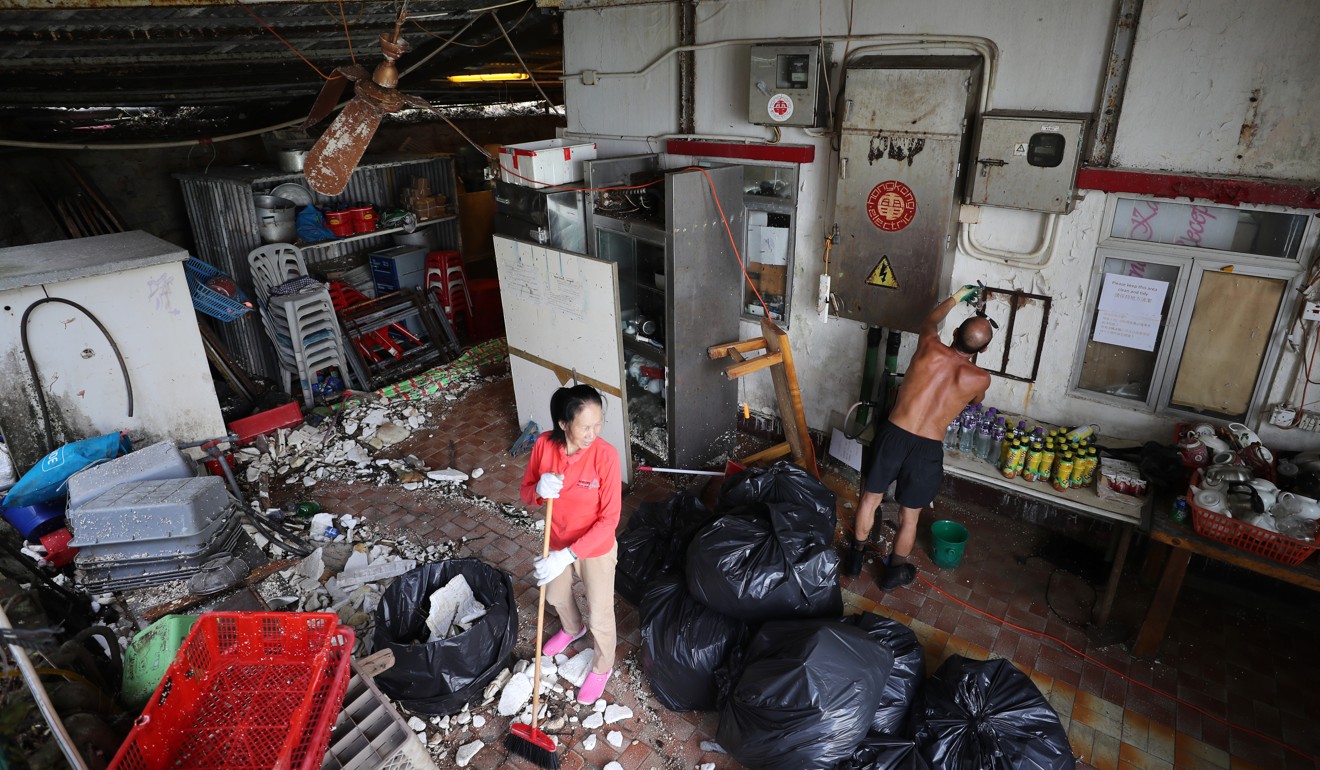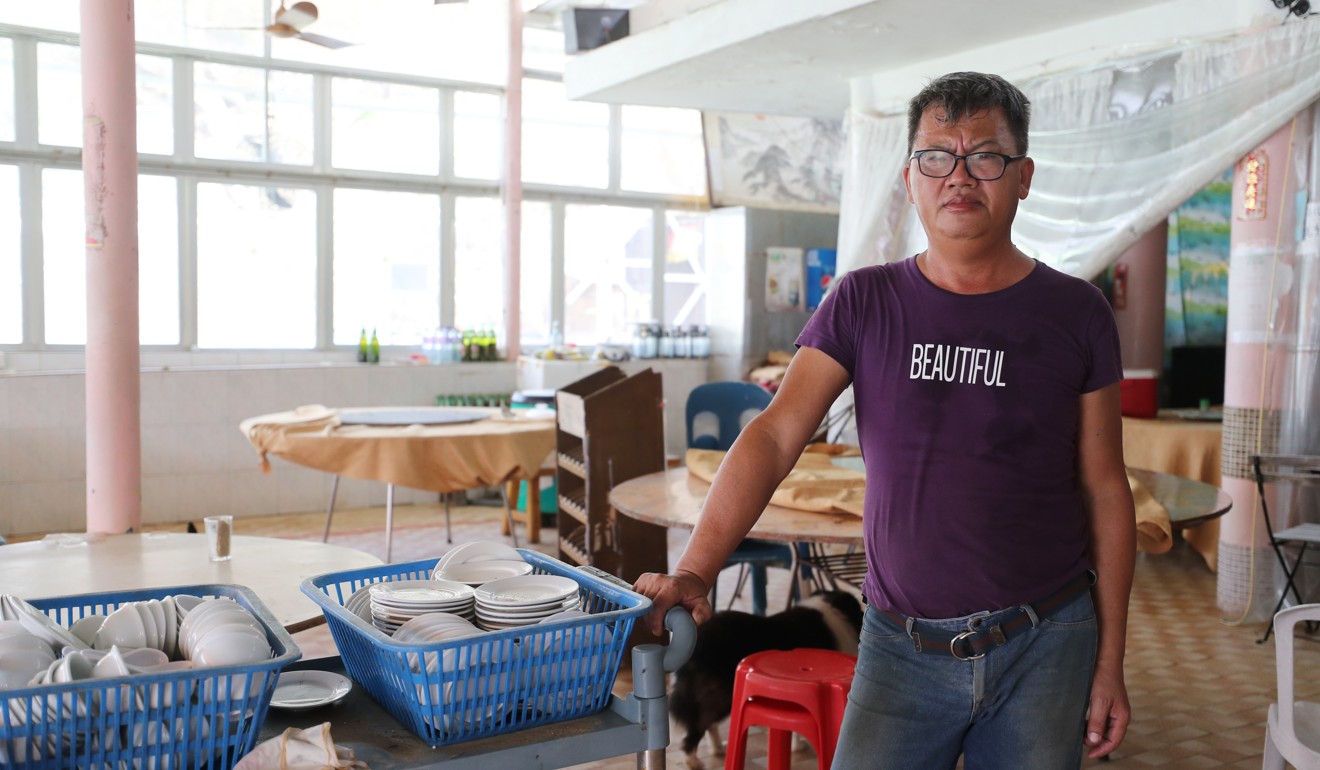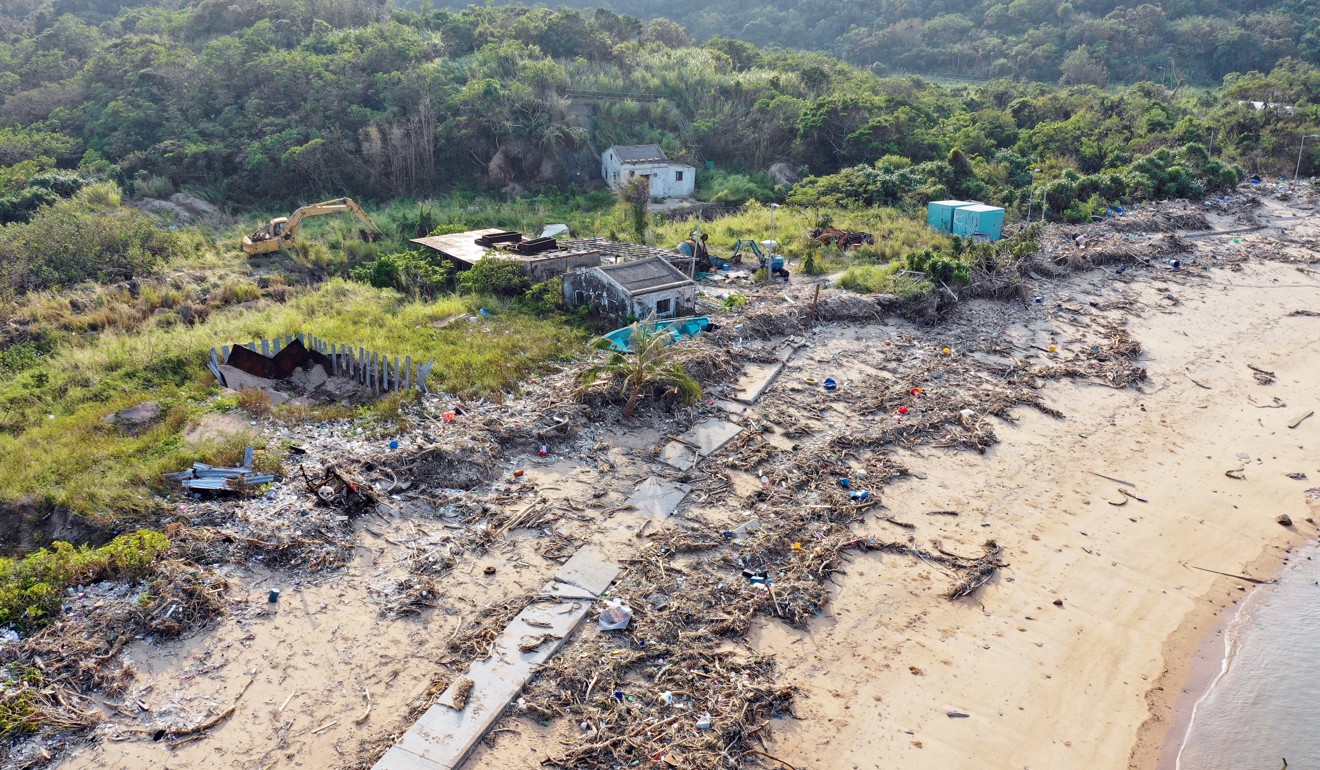
Typhoon Mangkhut: Hong Kong’s outlying islands face long road to recovery after storm devastates homes and businesses
Lamma, Cheung Chau and Crooked Island face arduous task after monster storm knocked out power, left water supply unstable and reduced some buildings to rubble
Kan Shiu-ki looks at the wreckage that was his restaurant and home on Lamma Island before Typhoon Mangkhut struck last weekend, and shakes his head.
There is no way he will be able to get his seaside restaurant repaired and cleaned up in time for the Mid-Autumn Festival on Monday.
“It will take 10 to 15 days to reopen, but maybe two or three months to get back fully to what it was before the storm,” Kan said on Wednesday.
Water supply has been unstable, and he has no working refrigerators to speak of – about seven are broken and two or three were washed away by the huge waves which overwhelmed the place.
“I think my losses are between HK$300,000 and HK$400,000,” he said.

Signs of monster storm Mangkhut are everywhere on Lamma and other outlying islands that bore the full force of the storm.
Kan’s restaurant and home, next to Sok Kwu Wan ferry pier in east Lamma, suffered a head-on strike when Mangkhut arrived from the southeast on Sunday.
Hong Kong to review post-storm arrangements after typhoon chaos
“It was like a tsunami,” recalled Kan, who had remained to look after his 46-year-old restaurant. “The waves were as high as three storeys. My house was shaking. Sand washed into the ground floor.”

Barrier boards he had erected on the short front wall were gone. A plastic shade over the outdoor dining area was broken. Walls on the ground floor were stained with water marks a metre high.
A two-minute walk from the restaurant, Sok Kwu Wan Playground was disembowelled, with broken power lines and water pipes exposed. Across the island, fallen trees and branches, bricks and other debris were strewn everywhere.
Grounded, damaged or lost: boat owners count cost of monster storm
The islanders have been trying to clean up, shipping out 21 trucks of garbage and debris each day. The waste transfer station at Sok Kwu Wan is able to handle only 10 tonnes per day.
Kan asked: “How many days will it take to complete the clean-up?”

Christian Bullen hazards a guess: “Six months. It will take us six months to clean up the beach.”
The 54-year-old Canadian has been living for six years in Lo Tik Wan, in east Lamma.
Mangkhut brought half of a nearshore fish farm onto the beach in front of his village house, burying his two boats.
Bullen stayed on the second floor of his home and watched his boats – worth more than HK$180,000 – being smashed to pieces. It was heartbreaking, he said.
Typhoon Mangkhut officially Hong Kong’s most intense storm since records began
A metre-tall front wall in his yard was broken by strong waves, the main door was smashed open by flying bricks, and his ground floor was flooded.
Kat O, or Crooked Island, off Tai Po’s Plover Cove Country Park, is also in distress.
Its mostly elderly residents were left without power and fresh water supply after the storm.

Videos and photos posted to a Facebook group showed that some seaside houses were reduced to rubble. Salvaged furniture and personal belongings were piled up outdoors as homes were either flooded or covered with sand and mud.
Some former Kat O residents have formed a volunteer group that is planning to go there on Saturday to help the clean-up.
Some 48km southwest of Kat O, popular holiday destination Cheung Chau was dealing with a large number of fallen trees.
The ‘impossible knot’ of Tai Wai station: post-typhoon commute chaos
“Though the public hygiene workers have been working very hard since the typhoon was over, the workload was simply too much,” said Leung Kwok-ho, a resident who ran as an independent candidate in the 2015 district council election.
As of Tuesday afternoon, some 90 per cent of the 500-metre road connecting Kwok Man School and a helipad on the seaside at Tung Wan was completely destroyed. Water and power supplies were not stable.
“I think we will need at least one week just to clear obstacles on the roads and lanes,” Leung said.
“We can’t just rely on the government. Residents have started to join the effort and we need more local hands.”
Additional reporting by Jane Zhang

